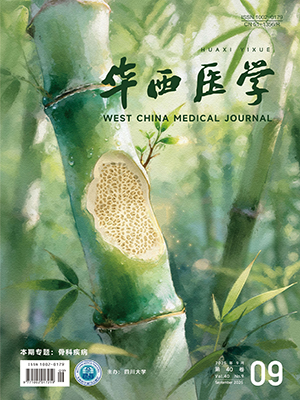| 1. |
陈立典, 励建安. 发展中的中国康复医学. 康复学报, 2015, 25(1): 2-5.
|
| 2. |
丁海云, 张营, 刘嘉, 等. 我国三级综合医院康复医学科建设现状调查. 中华医院管理杂志, 2015, 31(5): 336-340.
|
| 3. |
杨珊莉, 陈白, 刘建忠, 等. CARF认证与中国康复机构质量管理. 康复学报, 2018, 28(4): 59-62.
|
| 4. |
李建军. 中国康复医学发展的回顾与展望. 中国康复理论与实践, 2011, 17(1): 1-4.
|
| 5. |
中共中央国务院. “健康中国2030”规划纲要. (2016-10-25)[2020-01-26]. http://www.gov.cn/zhengce/2016-10/25/content_5124174.htm.
|
| 6. |
张娜, 周谋望, 刘楠, 等. 2016年度全国脊髓损伤康复医疗质量控制调查报告. 中国康复医学杂志, 2018, 33(10): 1137-1141.
|
| 7. |
练艺影, 于涛, 李学会, 等. 社区卫生服务中心医疗康复资源现状与优化策略的探讨. 中国康复, 2018, 33(1): 85-88.
|
| 8. |
谢凌锋, 许涛, 刘雅丽, 等. 国内康复治疗教育现状的研究. 中国康复, 2019, 34(10): 557-560.
|
| 9. |
中国康复医学会康复治疗专业委员会. 中国康复治疗师规范化培训专家共识. 中国康复医学杂志, 2017, 32(10): 1095-1097.
|
| 10. |
钟朱炎. 标准操作规范-SOP介绍(一). 中国护理管理, 2010, 10(2): 79-80.
|
| 11. |
任仲杰. 美国的医疗差错和不良事件报告系统. 中华医院管理杂志, 2006, 22(6): 425-427.
|
| 12. |
Leape LL, Brennan TA, Laird N, et al. The Nature of adverse events in hospitalized patients. Results of the Harvard Medical Practice Study Ⅱ. N Engl J Med, 1991, 324(6): 377-384.
|
| 13. |
左惠榕, 杜雅玲, 王彤. 不同随访方式对脑卒中康复患者遵医行为的影响. 中国康复理论与实践, 2013, 19(4): 381-383.
|
| 14. |
李伦兰, 甘玉云, 张丽娜, 等. 出院后电话随访对人工髋关节置换术后患者康复效果的影响. 中华护理杂志, 2014, 49(4): 414-417.
|
| 15. |
中华医学会神经病学分会神经康复学组, 中华医学会神经病学分会脑血管病学组, 卫生部脑卒中筛查与防治工程委员会办公室. 中国脑卒中康复治疗指南(2011完全版). 中国医学前沿杂志, 2012, 4(6): 55-76.
|
| 16. |
何伶俐, 雷学忠. 医院感染控制新进展. 中华护理杂志, 2008, 43(3): 283-286.
|
| 17. |
徐红星, 吕双喜, 李莉. 住院偏瘫康复治疗患者医院感染控制研究. 中华医院感染学杂志, 2013, 23(24): 5981-5983.
|
| 18. |
汪月忠, 叶志弘, 同俏静, 等. 院内感染控制和预防的精细化管理. 中华医院管理杂志, 2012, 28(3): 234-236.
|
| 19. |
中共中央国务院. 关于支持深圳建设中国特色社会主义先行示范区的意见. (2019-08-18)[2020-01-26]. http://www.gov.cn/zhengce/2019-08/18/content_5422183.htm.
|




